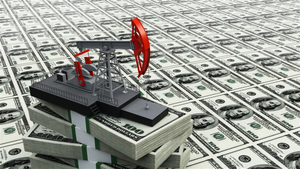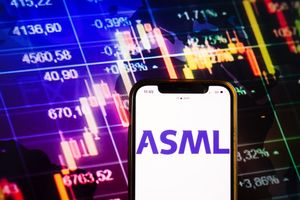 Precious metals like silver have long been used by investors as stores of value, offering a hedge against inflation and diversification against the general market. However, investing in physical commodities like silver and gold can be more complicated than buying and selling shares of stock due to authenticity and storage concerns.
Precious metals like silver have long been used by investors as stores of value, offering a hedge against inflation and diversification against the general market. However, investing in physical commodities like silver and gold can be more complicated than buying and selling shares of stock due to authenticity and storage concerns.
Read on to learn more about silver as an asset class, the multiple ways that you can invest in silver, and a few of the benefits and drawbacks of this ancient investment asset.
Ways to Invest in Silver
There are multiple investment assets that you can use to add silver exposure to your portfolio, including both physical silver investments and stock-based options like silver ETFs. You can also gain exposure to precious metals by investing in adjacent industries like mining and silver refinement to profit from potential price differences. Let's take a look at a few ways you can invest in silver.
Physical Silver
The most straightforward way to invest in silver is to purchase and hold physical silver, which is sold as an investment in two primary types:
- Bars: Investment-grade silver bars usually have a purity of at least 99.9%, which is marked as .999 fine silver. Fine silver bars are sold in a variety of sizes ranging from one ounce to 1,000 ounces, with the most common denominations being one, 10 and 100-ounce bars.
- Coins: Like bars, most silver coins are sold with a purity of 99.9% pure silver. Most silver coins are issued by financial government bodies like the U.S. Mint and the Royal Canadian Mint.
When investing in silver bars and coins, be sure that you’re purchasing through a reputable manufacturer like Johnson Matthey, Engelhard, or the Royal Mint. Some self-directed IRA providers even allow you to invest in silver with retirement benefits, with the custodian handling both purchase and storage. Most investors who hold their own physical investments choose to do so in a bank safety deposit vault or private vault company.
Silver Stocks
A more convenient way to invest in silver is to buy and hold stock of companies associated with the mining, refining, and sale of silver. When adding silver exposure to your portfolio, you can choose from multiple classifications of companies, including:
- Silver Producers: Primary silver producers provide the most direct way to profit from price changes in silver, as these companies are engaged in the direct mining and production of these products. An example of a major silver production stock is First Majestic Silver (NYSE: AG), a gold and silver mining company with operations in Canada and Mexico.
- Diversified Mining Stocks: General mining stocks do not focus specifically on precious metals but may combine silver mining activities with zinc, copper, or other types of ore extractions. BHP Group (NYSE: BHP) is a classic example of a highly diversified mining operation, with copper, uranium, molybdenum, gold, iron ore and coal mining segments in addition to silver investments.
- Streaming and Royalty Stock Companies: Streaming and royalty companies provide upfront financing to miners in exchange for a percentage of future production or revenue. For example, Franco-Nevada (NYSE: FNV) is a Canada-based company that provides financing for operations in South and Central America.
Investing in silver stocks is easier than investing in physical silver because you don’t need to worry about storage, finding a reputable provider or locating an IRA provider that offers silver investment options. It also solves the problem of liquidity, with most brokerage service providers allowing you to queue sales orders around the clock.
Silver stocks listed on major exchanges like the New York Stock Exchange must meet financial and oversight criteria before being listed, but they may still be especially volatile assets. Silver has traditionally displayed more drastic daily price changes than comparable precious metals like gold, which means that silver stocks may also see sudden changes in value.
Silver ETFs
An exchange-traded fund (ETF) is a type of fund that pools money together from multiple investors to invest in a particular type of stock or asset. Silver ETFs can be popular choices for beginners, allowing you to invest in a “basket” of stocks with a single purchase. These ETFs also provide a higher level of diversification, spreading your risk across multiple stocks. Like stock investments, the individual companies that make up the ETF may be engaged in both direct silver mining or a supplemental industry like refining or ore mining finance.
A quintessential example of a silver ETF is the iShares Silver Trust (NYSE: SLV). One of the largest and most popular silver ETFs, SLV holds physical silver bullion, providing investors with exposure to the direct price changes silver experiences. In August of 2024, it had more than $13 billion in assets under management as well as an accessible share price of less than $27.
Pros of Investing in Silver
Investing in silver as an asset class provides a unique level of diversification to your portfolio, including the following potential benefits.
Hedge Against Inflation
Precious metals like silver have traditionally been incorporated into portfolios as a hedge against inflation because they tend to retain value better during periods of inflation. When the value of currency falls, the price of silver may rise, preserving purchasing power.
Increased Demand During Growth Periods
The industrial uses of silver also contribute to increased demand during periods of high growth. For example, silver is an essential component of most solar panels because of its high thermal capacity. This means that during periods when there is an increased demand for solar panels, silver may see a corresponding increase in price. When you consider its uses across industries like medicine, mining and electronics, investors may see multiple opportunities to profit from changing prices as demand ebbs and flows.
More Affordable than Gold
As you compare precious metals to incorporate into your portfolio, you’ll find that silver is significantly more accessible than other popular choices like gold. In August of 2024, gold had an average spot price of $2,454 per ounce, while silver had an average price of $28.77 per ounce. If you’d like to add the benefits of physical metal commodities to your portfolio but cannot afford the high price of gold, silver can be a strong alternative.
Portfolio Diversification
Silver provides diversification benefits. As a physical asset, it can reduce the overall risk of a portfolio that may be heavily weighted in stocks and bonds.
Cons of Investing in Silver
While silver is a popular commodity investment, it does come with the risk of potentially sharp losses — especially when taking into account silver’s higher volatility rate.
Price Volatility
Silver is a more volatile asset than gold, meaning that it may see more drastic changes in its spot price throughout the day. If you’re closer to retirement and unable to handle a higher level of volatility, another investment could be a better choice.
Storage and Insurance Costs
Physical silver requires secure storage, which can incur additional costs. When investing in physical silver, you’ll need to do your research before choosing a manufacturer and decide the most practical way to store your investment.
If you choose to store silver at home, you'll need a secure location, such as a safe, and you may want to purchase insurance to protect against theft or damage. Alternatively, storing silver in a bank safety deposit box or a professional vault incurs ongoing rental or storage fees, which can add up over time.
If you invest in Silver ETFs, Mutual Funds, Closed-End Funds, or IRAS, the custodian is responsible for securely storing the silver in professional vaults, often insured.
Lower Liquidity Compared to Gold
Silver markets can be less liquid than gold, especially in large volumes, potentially making it harder to sell at favorable prices.
Economic Sensitivity
Since silver is heavily used in industrial applications, its price can be more sensitive to economic downturns. A recession or slowdown in industrial demand can negatively impact prices.
Investing in Silver for Beginners
Investing in silver can provide many of the same inflation safeguard benefits of gold at a lower price point. However, new investors may want to consider adding silver stocks or ETFs to their portfolio rather than physical silver. These assets are easier to buy and sell while also allowing you to benefit from the potential positive price movement silver will see in the future while making up only a portion of your overall investments.
Start Your Research with MarketBeat
Investments like physical silver may show different price movement trends than the overall market. Staying up-to-date with the latest market movements can enhance your trading without spending hours scouring the web for breaking stock news. Click here to sign up for a trial of MarketBeat’s premium market research reports and get stock market info delivered straight to your inbox daily.


















